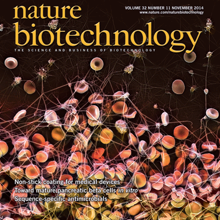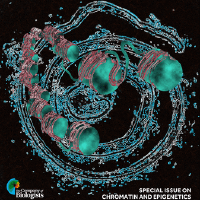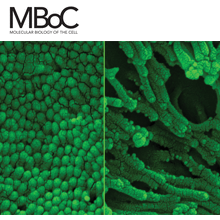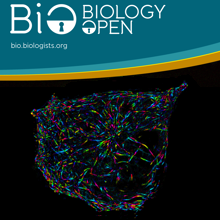Filter
Associated Lab
- Ahrens Lab (5) Apply Ahrens Lab filter
- Beyene Lab (1) Apply Beyene Lab filter
- Branson Lab (3) Apply Branson Lab filter
- Card Lab (1) Apply Card Lab filter
- Cardona Lab (1) Apply Cardona Lab filter
- Druckmann Lab (1) Apply Druckmann Lab filter
- Freeman Lab (4) Apply Freeman Lab filter
- Funke Lab (2) Apply Funke Lab filter
- Harris Lab (1) Apply Harris Lab filter
- Ji Lab (1) Apply Ji Lab filter
- Keller Lab (76) Apply Keller Lab filter
- Lavis Lab (3) Apply Lavis Lab filter
- Liu (Zhe) Lab (1) Apply Liu (Zhe) Lab filter
- Looger Lab (5) Apply Looger Lab filter
- Pavlopoulos Lab (1) Apply Pavlopoulos Lab filter
- Schreiter Lab (1) Apply Schreiter Lab filter
- Stringer Lab (1) Apply Stringer Lab filter
- Tillberg Lab (1) Apply Tillberg Lab filter
- Turaga Lab (1) Apply Turaga Lab filter
- Turner Lab (1) Apply Turner Lab filter
Associated Project Team
Publication Date
- 2024 (2) Apply 2024 filter
- 2023 (1) Apply 2023 filter
- 2022 (1) Apply 2022 filter
- 2021 (2) Apply 2021 filter
- 2020 (5) Apply 2020 filter
- 2019 (6) Apply 2019 filter
- 2018 (6) Apply 2018 filter
- 2017 (2) Apply 2017 filter
- 2016 (6) Apply 2016 filter
- 2015 (8) Apply 2015 filter
- 2014 (8) Apply 2014 filter
- 2013 (10) Apply 2013 filter
- 2012 (3) Apply 2012 filter
- 2011 (4) Apply 2011 filter
- 2010 (4) Apply 2010 filter
- 2009 (1) Apply 2009 filter
- 2008 (3) Apply 2008 filter
- 2007 (1) Apply 2007 filter
- 2006 (2) Apply 2006 filter
- 2005 (1) Apply 2005 filter
Type of Publication
76 Publications
Showing 41-50 of 76 resultsIn vivo imaging applications typically require carefully balancing conflicting parameters. Often it is necessary to achieve high imaging speed, low photo-bleaching, and photo-toxicity, good three-dimensional resolution, high signal-to-noise ratio, and excellent physical coverage at the same time. Light-sheet microscopy provides good performance in all of these categories, and is thus emerging as a particularly powerful live imaging method for the life sciences. We see an outstanding potential for applying light-sheet microscopy to the study of development and function of the early nervous system in vertebrates and higher invertebrates. Here, we review state-of-the-art approaches to live imaging of early development, and show how the unique capabilities of light-sheet microscopy can further advance our understanding of the development and function of the nervous system. We discuss key considerations in the design of light-sheet microscopy experiments, including sample preparation and fluorescent marker strategies, and provide an outlook for future directions in the field.
During gastrulation in the mouse embryo, dynamic cell movements including epiblast invagination and mesodermal layer expansion lead to the establishment of the three-layered body plan. The precise details of these movements, however, are sometimes elusive, because of the limitations in live imaging. To overcome this problem, we developed techniques to enable observation of living mouse embryos with digital scanned light sheet microscope (DSLM). The achieved deep and high time-resolution images of GFP-expressing nuclei and following 3D tracking analysis revealed the following findings: (i) Interkinetic nuclear migration (INM) occurs in the epiblast at embryonic day (E)6 and 6.5. (ii) INM-like migration occurs in the E5.5 embryo, when the epiblast is a monolayer and not yet pseudostratified. (iii) Primary driving force for INM at E6.5 is not pressure from neighboring nuclei. (iv) Mesodermal cells migrate not as a sheet but as individual cells without coordination.
The molecular and cellular architecture of the organs in a whole mouse is revealed through optical clearing.
The thirteen nuclear cleavages that give rise to the Drosophila blastoderm are some of the fastest known cell cycles. Surprisingly, the fertilized egg is provided with at most one-third of the dNTPs needed to complete the thirteen rounds of DNA replication. The rest must be synthesized by the embryo, concurrent with cleavage divisions. What is the reason for the limited supply of DNA building blocks? We propose that frugal control of dNTP synthesis contributes to the well-characterized deceleration of the cleavage cycles and is needed for robust accumulation of zygotic gene products. In support of this model, we demonstrate that when the levels of dNTPs are abnormally high, nuclear cleavages fail to sufficiently decelerate, the levels of zygotic transcription are dramatically reduced, and the embryo catastrophically fails early in gastrulation. Our work reveals a direct connection between metabolism, the cell cycle, and zygotic transcription.
During development, coordinated cell behaviors orchestrate tissue and organ morphogenesis. Detailed descriptions of cell lineages and behaviors provide a powerful framework to elucidate the mechanisms of morphogenesis. To study the cellular basis of limb development, we imaged transgenic fluorescently-labeled embryos from the crustacean Parhyale hawaiensis with multi-view light-sheet microscopy at high spatiotemporal resolution over several days of embryogenesis. The cell lineage of outgrowing thoracic limbs was reconstructed at single-cell resolution with new software called Massive Multi-view Tracker (MaMuT). In silico clonal analyses suggested that the early limb primordium becomes subdivided into anterior-posterior and dorsal-ventral compartments whose boundaries intersect at the distal tip of the growing limb. Limb-bud formation is associated with spatial modulation of cell proliferation, while limb elongation is also driven by preferential orientation of cell divisions along the proximal-distal growth axis. Cellular reconstructions were predictive of the expression patterns of limb development genes including the BMP morphogen Decapentaplegic.
Visualization of cellular and molecular processes is an indispensable tool for cell biologists, and innovations in microscopy methods unfailingly lead to new biological discoveries. Today, light microscopy (LM) provides ever-higher spatial and temporal resolution and visualization of biological process over enormous ranges. Electron microscopy (EM) is moving into the atomic resolution regime and allowing cellular analyses that are more physiological and sophisticated in scope. Importantly, much is being gained by combining multiple approaches, (e.g., LM and EM) to take advantage of their complementary strengths. The advent of high-throughput microscopies has led to a common need for sophisticated computational methods to quantitatively analyze huge amounts of data and translate images into new biological insights.
During development, different cell types must undergo distinct morphogenetic programs so that tissues develop the right dimensions in the appropriate place. In early eye morphogenesis, retinal progenitor cells (RPCs) move first towards the midline, before turning around to migrate out into the evaginating optic vesicles. Neighbouring forebrain cells, however, converge rapidly and then remain at the midline. These differential behaviours are regulated by the transcription factor Rx3. Here, we identify a downstream target of Rx3, the Ig-domain protein Nlcam, and characterise its role in regulating cell migration during the initial phase of optic vesicle morphogenesis. Through sophisticated live imaging and comprehensive cell tracking experiments in zebrafish, we show that ectopic expression of Nlcam in RPCs, as is observed in Rx3 mutants, causes enhanced convergence of these cells. Expression levels of Nlcam therefore regulate the migratory properties of RPCs. Our results provide evidence that the two phases of optic vesicle morphogenesis: slowed convergence and outward-directed migration, are under different genetic control. We propose that Nlcam forms part of the guidance machinery directing rapid midline migration of forebrain precursors, where it is normally expressed, and that its ectopic expression upon loss of Rx3 imparts these migratory characteristics upon RPCs.
An important question in early neural development is the origin of stochastic nuclear movement between apical and basal surfaces of neuroepithelia during interkinetic nuclear migration. Tracking of nuclear subpopulations has shown evidence of diffusion - mean squared displacements growing linearly in time - and suggested crowding from cell division at the apical surface drives basalward motion. Yet, this hypothesis has not yet been tested, and the forces involved not quantified. We employ long-term, rapid light-sheet and two-photon imaging of early zebrafish retinogenesis to track entire populations of nuclei within the tissue. The time-varying concentration profiles show clear evidence of crowding as nuclei reach close-packing and are quantitatively described by a nonlinear diffusion model. Considerations of nuclear motion constrained inside the enveloping cell membrane show that concentration-dependent stochastic forces inside cells, compatible in magnitude to those found in cytoskeletal transport, can explain the observed magnitude of the diffusion constant.
Nud1p, a protein homologous to the mammalian centrosome and midbody component Centriolin, is a component of the budding yeast spindle pole body (SPB), with roles in anchorage of microtubules and regulation of the mitotic exit network during vegetative growth. Here we analyze the function of Nud1p during yeast meiosis. We find that a nud1-2 temperature-sensitive mutant has two meiosis-related defects that reflect genetically distinct functions of Nud1p. First, the mutation affects spore formation due to its late function during spore maturation. Second, and most important, the mutant loses its ability to distinguish between the ages of the four spindle pole bodies, which normally determine which SPB would be preferentially included in the mature spores. This affects the regulation of genome inheritance in starved meiotic cells and leads to the formation of random dyads instead of non-sister dyads under these conditions. Both functions of Nud1p are connected to the ability of Spc72p to bind to the outer plaque and half-bridge (via Kar1p) of the SPB.
The formation of functional neuronal circuits relies on accurate migration and proper axonal outgrowth of neuronal precursors. On the route to their targets migrating cells and growing axons depend on both, directional information from neurotropic cues and adhesive interactions mediated via extracellular matrix molecules or neighbouring cells. The inactivation of guidance cues or the interference with cell adhesion can cause severe defects in neuronal migration and axon guidance. In this study we have analyzed the function of the MAM domain containing glycosylphosphatidylinositol anchor 2A (MDGA2A) protein in zebrafish cranial motoneuron development. MDGA2A is prominently expressed in distinct clusters of cranial motoneurons, especially in the ones of the trigeminal and facial nerves. Analyses of MDGA2A knockdown embryos by light sheet and confocal microscopy revealed impaired migration and aberrant axonal outgrowth of these neurons; suggesting that adhesive interactions mediated by MDGA2A are required for the proper arrangement and outgrowth of cranial motoneuron subtypes.










